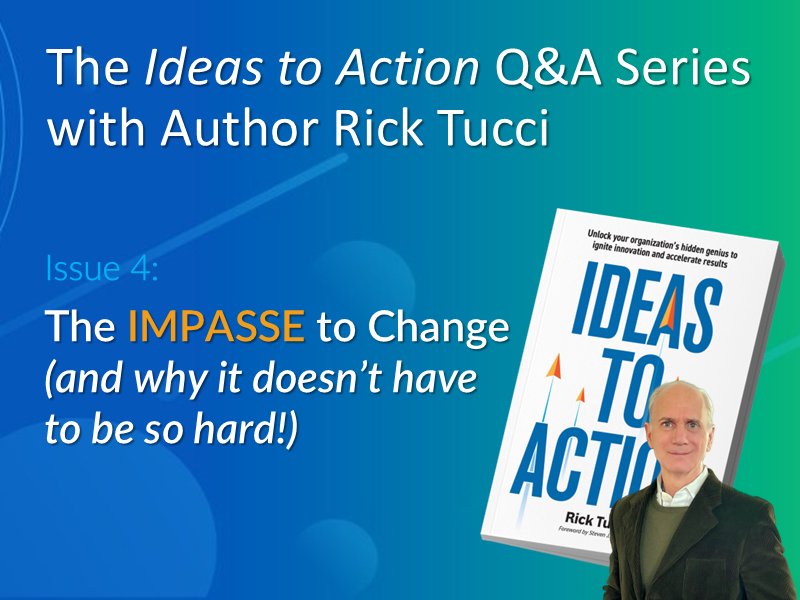Q: Rick, you often talk about “The Impasse to Change.” What does that mean?
Rick Tucci:
It’s a pattern we see in almost every organization. Executives underestimate frontline wisdom. Managers are buried under top-down directives. And employees grow cynical after being ignored too many times. Together, those forces create a self-reinforcing loop: ideas aren’t trusted, progress stalls, and talent gets wasted. That’s what we call the Psychological Impasse to Change.
Q: Why do traditional change management methods make this worse?
Rick Tucci:
Because most methods start with persuasion. Leaders spend time crafting vision statements, running town halls, and rolling out polished presentations. The assumption is that if employees just understand the “why,” they’ll get on board. But that’s what I call the Persuasion Trap.
The result is usually the Illusion of Engagement. Employees nod, attend meetings, and fill out surveys—but they don’t feel ownership. It’s easier to go through the motions than to resist. That’s what’s recently been called “quiet quitting,” but in reality it’s just disengagement by another name.
Q: So how do leaders break through this impasse?
Rick Tucci:
By shifting from persuasion to ownership. That means trusting the people closest to the work to share their ideas and then giving them a reliable process to act on those ideas. It’s not about making employees passengers on the change journey—it’s about putting them in the driver’s seat.
Q: What role does the Ideas-to-Action Process™ play in breaking the impasse?
Rick Tucci:
It gives both leaders and employees confidence. Employees know their ideas will be heard and implemented. Leaders know that involvement will yield actionable solutions. The process is built around speed, structure, and simplicity—helping teams generate quick wins in 60 days or less. When those early wins happen, ownership builds, momentum grows, and the impasse is broken.
Q: Why does this matter right now?
Rick Tucci:
Because organizations can’t afford wasted talent or stalled initiatives. In the age of AI and rapid disruption, leaders need every ounce of creativity, energy, and problem-solving power their teams can offer. Breaking the impasse unlocks that potential. It’s not a nice-to-have anymore—it’s mission critical.
Q: What’s next in the series?
Rick Tucci:
In our next post, we’ll take a deeper look at how one company overcame years of stalled initiatives by giving its frontline teams ownership. It’s a case study that shows the Ideas-to-Action Process™ at work—and the dramatic results that followed.
Take the Next to Employee-Powered Innovation
This is Issue 4 of the Ideas-to-Action Q&A Series with author Rick Tucci—a chapter-by-chapter journey through the mindset, method, and results of employee-powered innovation.
- Missed Issue 3? Read it here: The Ideas to Action Q&A Series Issue 3 | What Makes the Ideas-to-Action Process™ Different?.]
- Ready to try it yourself? Get the book on Amazon.
- Explore more at www.ideastoactionplatform.com


